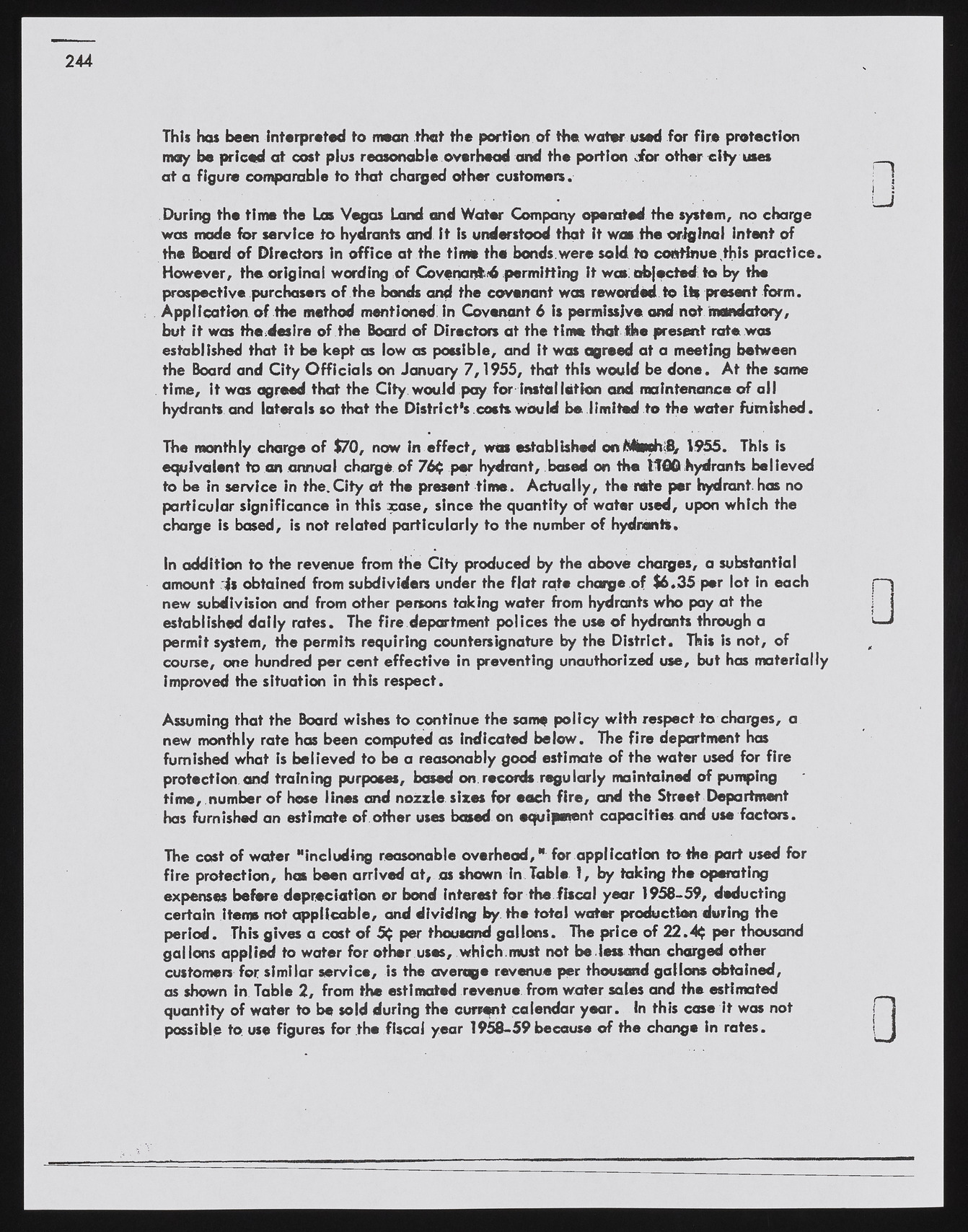Copyright & Fair-use Agreement
UNLV Special Collections provides copies of materials to facilitate private study, scholarship, or research. Material not in the public domain may be used according to fair use of copyrighted materials as defined by copyright law. Please cite us.
Please note that UNLV may not own the copyright to these materials and cannot provide permission to publish or distribute materials when UNLV is not the copyright holder. The user is solely responsible for determining the copyright status of materials and obtaining permission to use material from the copyright holder and for determining whether any permissions relating to any other rights are necessary for the intended use, and for obtaining all required permissions beyond that allowed by fair use.
Read more about our reproduction and use policy.
I agree.Information
Digital ID
Permalink
Details
More Info
Rights
Digital Provenance
Publisher
Transcription
2 4 4 This has been interpreted to mean that the portion of the water used for fire protection may be priced at cost plus reasonable overhead and the portion ofor other c ity uses at a figure comparable to that charged other customers. During the time the Las Vegas Land a id Water Company operated the system, no charge was made for service to hydrants and it is understood that it was the original intent of the Board of Directors in office at the time the bonds.were sold to continue this practice. However, the original wording of Covenants permitting it was: objected to by the prospective purchasers of the bands and the covenant was reworded to Lts present form. Application of the method mentioned! in Covenant 6 is permissive and not mandatory, but it was the desire of the Board of Directors at the time that the present rate was established that it be kept as low as possible, and it was agreed at a meeting between the Board and C ity O fficials on January 7,1955, that this would be done. A t the same time, it was agreed that the City, would pay for- instal lotion and maintenance of all hydrants and laterals so that the District's costs would be limited to the water furnished. The monthly charge of $70, now in effect, was established onMieeh S, 1955. This is equivalent to on annual charge of 76$ per hydrant, based on the ITQQ hydrants believed to be in service in the.City at the present time. A c tu a lly , the rate par hydrant, has no particular significance in this xase, since the quantity of water used, upon which the charge is based, is not related particularly to the number of hydrants. In addition to the revenue from the C ity produced by the above charges, a substantial amount is obtained from subdividers under the flat rate charge of $6.35 per lot in each new subdivision and from other persons taking water from hydrants who pay at the established daily rates. The fire department polices the use of hydrants through a permit system, the permits requiring countersignature by the District. This is not, of course, one hundred per cent effective in preventing unauthorized use, but has materially improved the situation in this respect. Assuming that the Board wishes to continue the samp policy with respect to charges, a new monthly rate has been computed as indicated below. The fire department has furnished what is believed to be a reasonably good estimate of the water used for fire protection.and training purposes, based on.records regularly maintained of pumping time, number of hose lines and nozzle sizes for each fire , and the Street Department has furnished an estimate of.other uses based on equipeient capacities, and use factors. The cost of water "including reasonable overhead, " for application to the part used for fire protection, has been arrived a t, as shown in Table 1, by taking the operating expenses before depreciation or bond interest for the fiscal year 1958-59, deducting certain Items not applicable, and dividing by. the total water production during the period. This gives a cost of 5$ per thousand gallons. The price of 22.4$ per thousand gallons applied to water for other uses, whichrnust not be.less than charged other customers for similar service, is the a ven pe revenue per thousand gallons obtained, as shown In Table 2 , from the estimated revenue from water sales and the estimated quantity of water to be sold during the current calendar ye ar. In this case it was not possible to. use figures for the fiscal year 1958-59 because of the change in rates. c m

